Due to its unmatched technological innovation, Netflix, a major player in the entertainment industry, has become a driving force in the IT industry. Netflix has left several leading IT firms in the dust with its single video-streaming platform while showing top-tier engineering, a distinctive culture, and ground-breaking product development.
DevOps is one of the great approaches, and Netflix is a shining illustration of how it can lead to quick innovation and multiple economic benefits. They have seen nearly faultless uptime thanks to their DevOps culture, accelerated the release of new services to consumers, and seen a significant increase in subscriptions and streaming hours.
The most popular streaming service in the world, Netflix boasts a staggering 214 million customers spread over 190 nations.
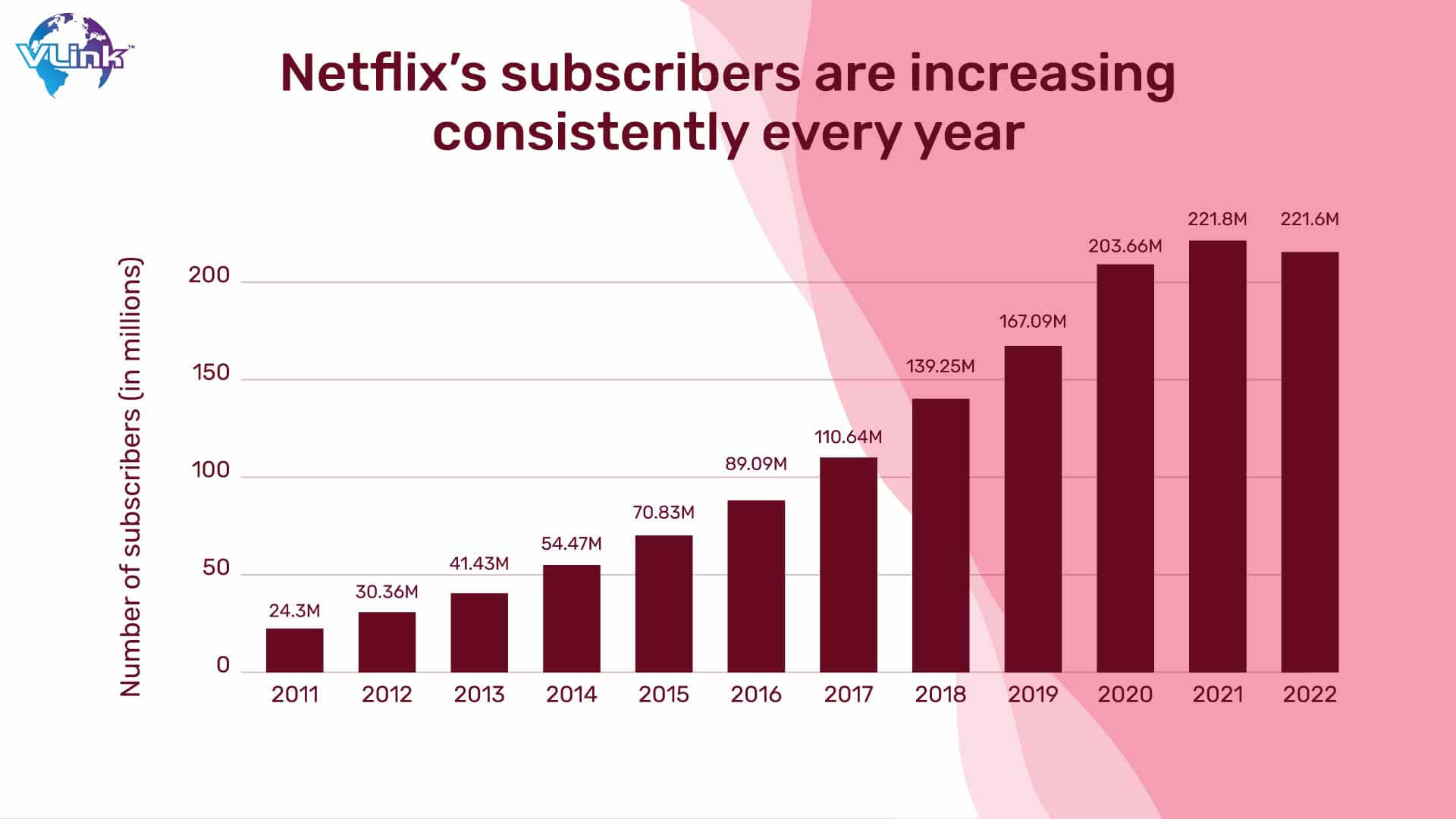 They were able to quickly adapt to customer needs and improve user experiences because of their DevOps culture and capacity to accept cutting-edge technology. Surprisingly, Netflix doesn't declare itself to be a DevOps company even though it is the model for the discipline.
They were able to quickly adapt to customer needs and improve user experiences because of their DevOps culture and capacity to accept cutting-edge technology. Surprisingly, Netflix doesn't declare itself to be a DevOps company even though it is the model for the discipline.
We'll examine how Netflix naturally created a DevOps automation culture through creative and unorthodox methods in this instructive case study. Netflix ultimately reaped considerable benefits from this paradigm-shifting strategy.
Netflix’s cloud journey
In addition to the necessity for better infrastructure, Netflix's migration to the cloud was motivated by a movement toward embracing contemporary technological methods like DevOps services. Because of the 2008 outage, Netflix decided to work with AWS for their DevOps and cloud managed services.
Instead of doing a simple transfer, they chose to completely redesign their application on the cloud to achieve true cloud nativeness and take advantage of DevOps capabilities.
Netflix was able to implement a microservices architecture because of this strategy, which improved its scalability, dependability, and overall user experience. By incorporating DevOps services into its transformation, Netflix strengthened its position as the entertainment industry's software innovation leader.
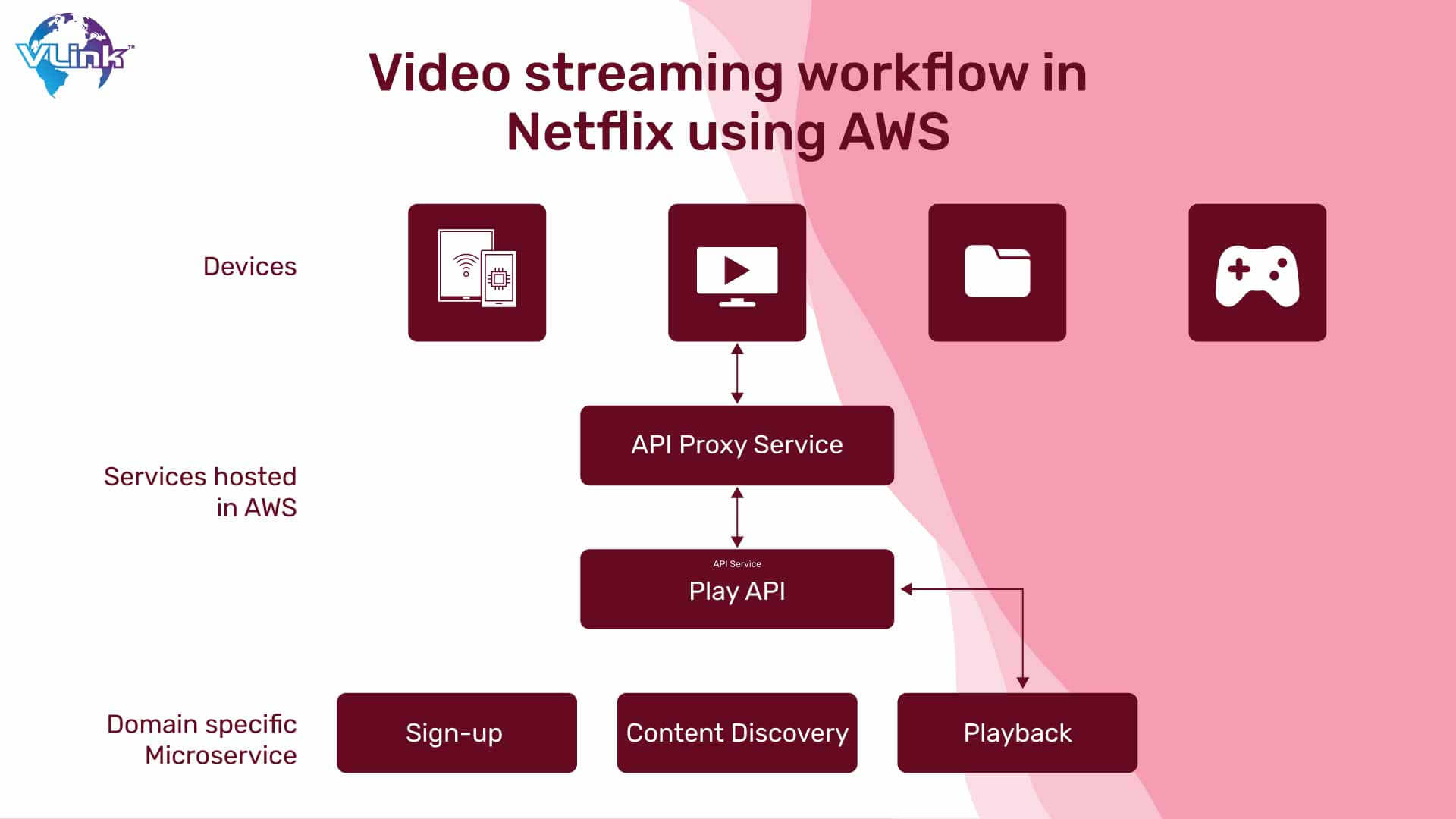 It was crucial for Netflix to switch to a denormalized data architecture utilizing NoSQL databases in order to provide their staff more autonomy and flexibility. This adjustment gave each team the freedom to develop and implement improvements at their own speed, encouraging an innovative and adaptable culture.
It was crucial for Netflix to switch to a denormalized data architecture utilizing NoSQL databases in order to provide their staff more autonomy and flexibility. This adjustment gave each team the freedom to develop and implement improvements at their own speed, encouraging an innovative and adaptable culture.
Continuous delivery was made simple and effective by replacing the prior laborious multi-week hardware provisioning procedures with centralized release coordination. Self-service tools were also introduced because of this transition, enabling product engineering teams to take control of their operations and make choices on their own.
As a result, Netflix experienced an impressive uptick in creativity and adopted the core principles of the DevOps culture. Notably, their subscriber base increased astonishingly from the prior year by an incredible eightfold, showing the significant impact of these adjustments.
Additionally, between December 2007 and December 2015, Netflix's monthly streaming hours increased a thousandfold, demonstrating their exceptional success in the entertainment sector.
Chaos monkey & Simian army: Netflix’s two aces of success
Resiliency was brought about by Netflix's move to the cloud, lowering the likelihood of further disruptions. However, the technical team worked to make sure they could manage any unanticipated mistakes that would pose serious difficulties on the road.
1. Chaos Monkey
To improve the security, reliability, and availability of its cloud infrastructure, Netflix adopted a DevOps strategy after realizing the value of frequent failure in preventing bigger catastrophes.
They were able to do this thanks to the clever development of Chaos Monkey, a program created to continuously evaluate the system's capacity to withstand unforeseen failures without impacting users. 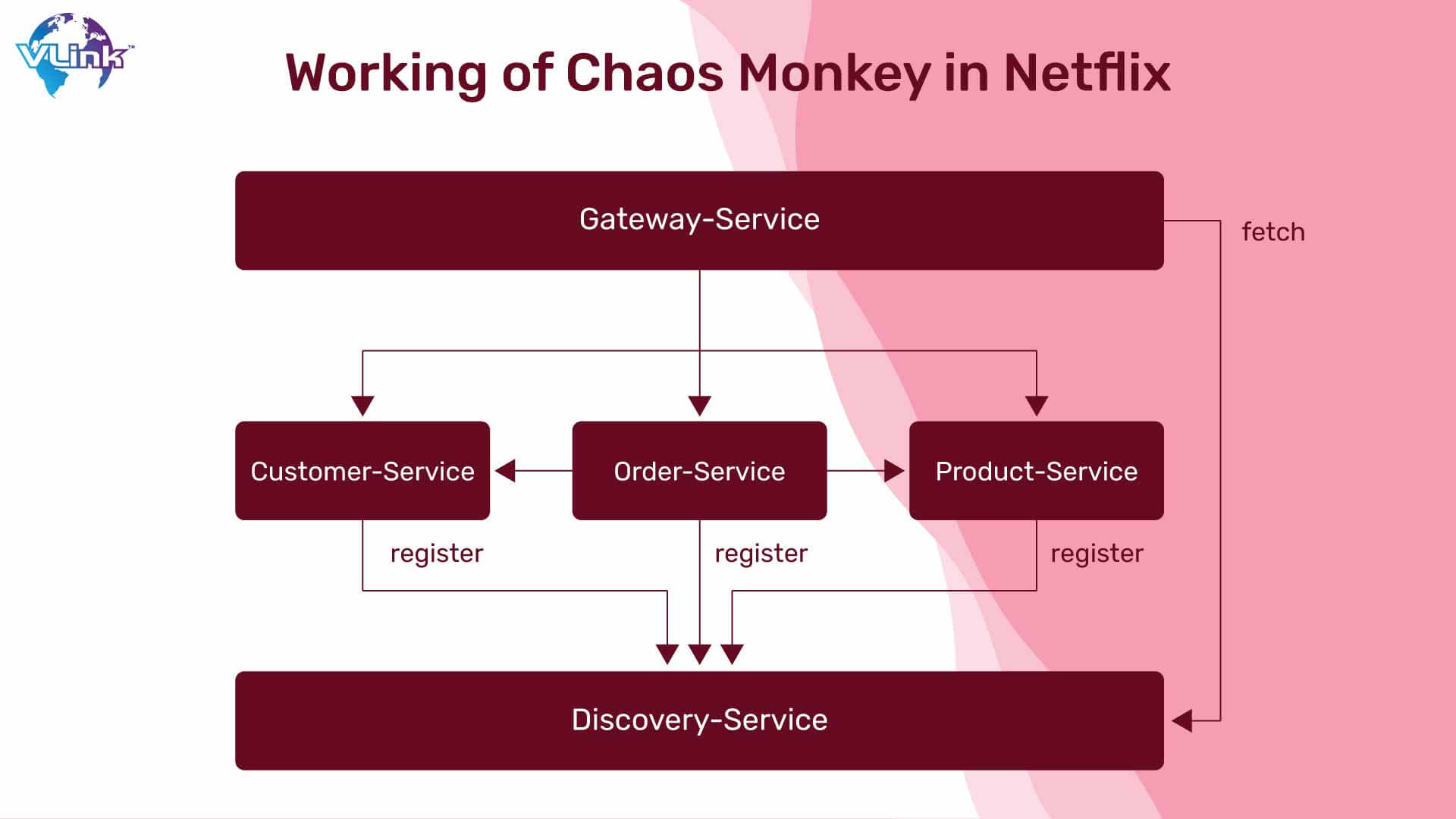 Chaos Monkey executes as a continuous script across all Netflix environments, terminating production instances and services at random inside the architecture. Chaos Monkey’s implementation has proven invaluable for Netflix developers, serving multiple purposes:
Chaos Monkey executes as a continuous script across all Netflix environments, terminating production instances and services at random inside the architecture. Chaos Monkey’s implementation has proven invaluable for Netflix developers, serving multiple purposes:
- Recognizing vulnerable areas where optimization is needed.
- Progressing with automatic recovery algorithms to complement the development while addressing vulnerabilities.
- Streaming the text cases when failures occur or under similar conditions.
- Complementing the issue-resolving procedures consistently.
2. The Simian Army
Netflix engineers were motivated to increase their resilience against a wider spectrum of faults and irregularities after their success with Chaos Monkey. As a result, they created the Simian Army, a clever virtual toolkit with unique powers.
- Latency Monkey
This dynamic army's first soldier, Latency Monkey, simulates service degradation by adding delays to RESTful client-server communication. This enables Netflix to evaluate how upstream providers will react to certain circumstances and their capacity to do so.
They can assess the system's viability without physically pulling services offline by simulating total service outage through the use of significant delays. This was especially useful for testing new services since it allowed dependencies to fail without affecting the entire system.
- Conformity Monkey
Conformity Monkey, a useful instrument in the Simian Army, relentlessly searches for instances that vary from the most effective procedures and swiftly shuts them down. This move forces the service providers to appropriately relaunch these instances, guaranteeing compliance with best practices.
- Doctor Monkey
By using health checks and keeping an eye on external health indicators like CPU load, Doctor Monkey oversees spotting sick models. When the service owners have addressed the main problem, the discovered unhealthy instances are immediately removed from service and terminated.
- Janitor Monkey
Janitor Monkey is entrusted with keeping the cloud environment clutter-free, systematically looking for and getting rid of superfluous resources, and making sure that resources are utilized to their full potential.
- Security Monkey
A crucial responsibility of Conformity Monkey's Security Monkey division is to spot security flaws or vulnerabilities, such incorrectly configured AWS security groups. Offending instances are swiftly removed to keep the environment secure. Security Monkey further checks the validity of SSL and DRM certificates to guarantee timely renewals as needed.
Read more about top cloud security trends of future.
- 10-18 Monkey
The unique technologies that make up Netflix's Simian Army embody the DevOps tenets of automation, quality control, and business priority.
10-18 Monkey, an acronym for Localization-Internationalization, was one of these tools, and it was helpful in discovering configuration and runtime difficulties, for instance serving users from different geographical areas and linguistic backgrounds.
- Chaos Gorilla
Chaos Gorilla, which replicated the complete outage of an Amazon availability region, was another soldier in this tenacious army. This thoroughly verified the system's capacity to rebalance to operational availability locations without requiring manual assistance or having an obvious effect on users.
Netflix’s adoption of “Containerization”
Titus (a container management system) worked as Netflix's robust deployment unit and flexible batch task scheduling system. It played a crucial role in the company's decision to increase support for the industry's expanding batch use cases.
The platform enabled batch users to quickly create complex infrastructure and optimize bigger instances across various workloads by facilitating seamless scaling and effective resource consumption.
This allowed batch users to streamline their procedures and increase productivity by quickly scheduling locally created code for execution on Titus. Titus had a positive effect on batch processes as well as the service consumers.
It ensured a smooth transition from development to deployment by streamlining resource management and providing local test environments compatible with production deployment. The ability to release new versions of programs, enable quicker iterations, and better the entire software development cycle was all much improved, according to developers. 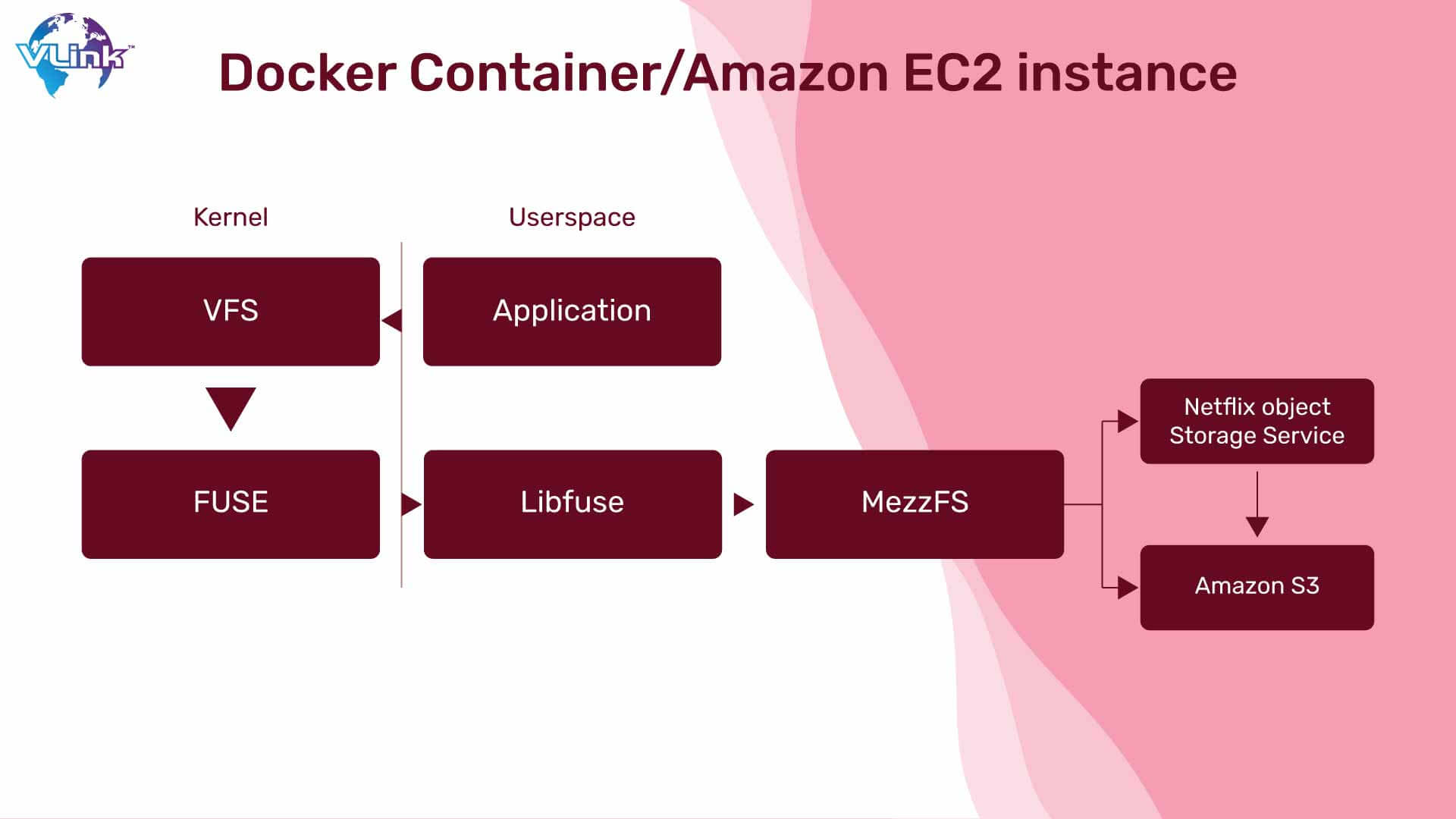 Titus' deployments were extremely quick and effective. This accelerated approach, with a 2-minute setup time, allowed batch and service users to experiment locally, carry out short testing, and deploy with absolute confidence, eventually resulting in a more agile and resilient development ecosystem.
Titus' deployments were extremely quick and effective. This accelerated approach, with a 2-minute setup time, allowed batch and service users to experiment locally, carry out short testing, and deploy with absolute confidence, eventually resulting in a more agile and resilient development ecosystem.
Titus uplifted the game for Netflix, encouraging creativity, effectiveness, and confidence throughout all aspects of their business. Innovative technological solutions may considerably improve the capabilities and performance of a top entertainment platform, as seen by its smooth integration into Netflix's infrastructure.
Implementation of “Full-cycle Developers” model
The shift to "Full Cycle Developers" has proven to be a fantastic approach, giving development teams access to effective productivity tools, and giving them full ownership of the SDLC. To encourage skill growth among new developers, Netflix supported this paradigm shift with ongoing training and assistance provided through dev boot camps.
Netflix implemented user-friendly solutions like Spinnaker, a Continuous Delivery platform, to streamline the deployment process and make it possible to release software updates quickly and confidently. The benefits of using such models are great, but dedicated development teams and engineers must undergo a big mental change. 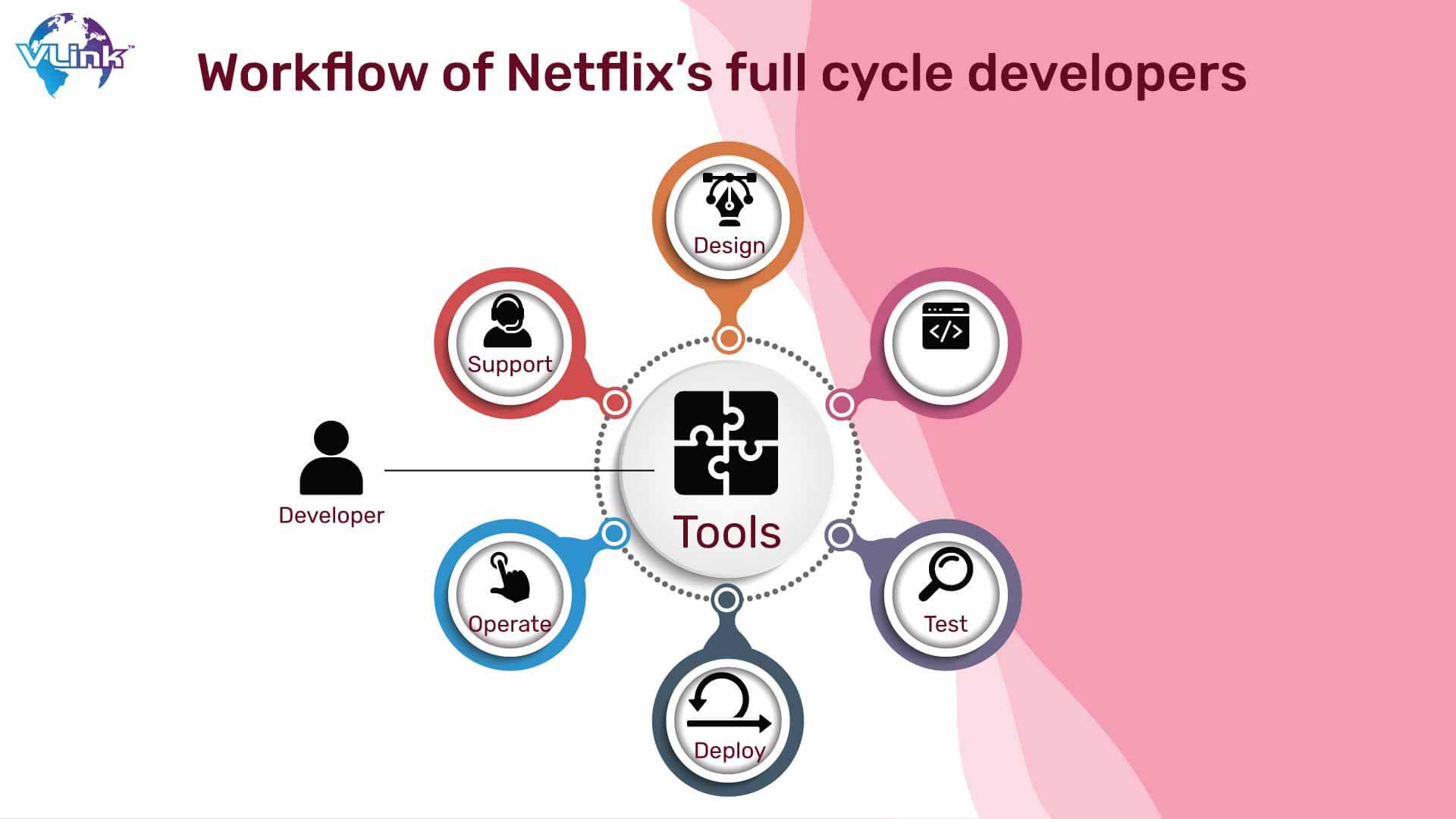 Organizations may start by assessing their unique demands, taking the associated expenses into account, and implementing just the required complications in order to effectively deploy this approach outside of Netflix. Adopting a transformational attitude becomes essential to use this strategy effectively in any situation.
Organizations may start by assessing their unique demands, taking the associated expenses into account, and implementing just the required complications in order to effectively deploy this approach outside of Netflix. Adopting a transformational attitude becomes essential to use this strategy effectively in any situation.
Lessons to learn from Netflix’s DevOps strategy
Although Netflix's DevOps strategy is customized for their particular workplace, there are important lessons to be learned and applied in a variety of organizations:
- Take advantage of developer empowerment
Providing developers with access to the production environment without enforcing stringent rules will enable them to take charge of their actions.
- Value independence & accountability
Count on smart recruits to come up with the finest ideas and strike a balance between freedom and accountability.
- Prioritize the quality of innovation
Encourage developers of new features to create them quickly so that they may please consumers with a shorter time to market.
- Focusing on context & not control
Instead of micromanaging every action, provide teams pertinent business context to build an autonomous culture.
- Widening the range of innovations
To encourage flexibility and adaptability, teams should utilize their choice programming languages, libraries, and tools.
- Encourage cooperation over silos
Encourage smooth integration and interdependence amongst teams by fostering communication and collaboration between them.
- Adopt an ownership mindset
Inspire teams to adopt a "you build it, you run it" mentality where they take ownership of their own inventions.
- Prefer data-driven choices
Make data-driven decisions and invest in algorithms and systems that can swiftly handle enormous volumes of data.
- Prioritize your audience
Keep your attention on improving the user experience with each release and coordinating your efforts with those of your customers.
- Cultivate a DevOps culture
Foster a positive culture that upholds the values of cooperation, automation, and continuous improvement rather than merely applying DevOps concepts.
How VLink Can Empower Your DevOps Journey
DevOps is a philosophy that necessitates changing organizational structures and procedures in order to improve software quality and continually generate economic value. Automation, continuous integration, delivery, deployment, testing, and monitoring are just a few of the activities that are involved.
While Netflix is a benchmark for DevOps, we at VLink recognize that not every firm can copy its culture exactly. We at VLink are ready to assist you optimize your delivery and deployment processes utilizing the appropriate DevOps toolset and know-how.
Our DevOps-managed services offer high-quality software with a shorter time-to-market with the goal of accelerating your product life cycle, encouraging quick innovation, and achieving maximum business efficiency.
We build solutions that meet your business automation requirements and make processes efficient, time-saving, and result-oriented. Our advanced tech stack and developers with innovative mindset can help you develop and deploy paradigms that enable seamless management.







